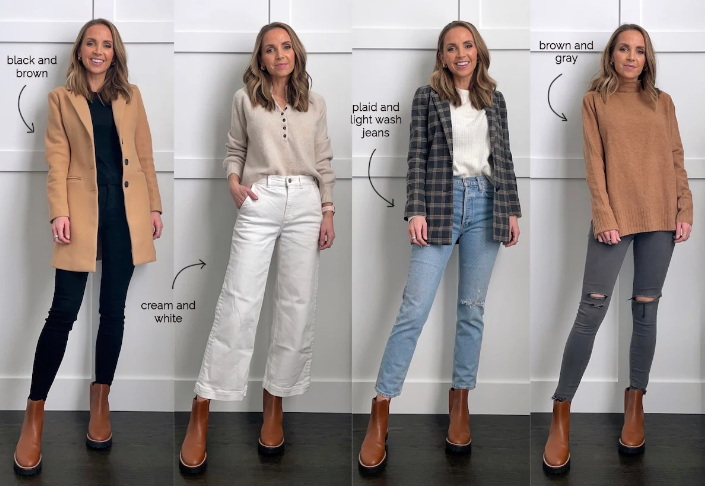Content Menu
● Introduction to Foot Structure Differences
>> Foot Shape and Shoe Design
● Differences in Cushioning and Weight
>> Impact on Performance
● Style and Aesthetics
>> Fashion Trends
● Athletic Shoes: Specific Differences
● Materials and Durability
● Ergonomics and Comfort
● Cultural and Social Factors
● Technological Innovations
● Sustainability and Environmental Impact
● Customization and Personalization
● Impact of Lifestyle on Shoe Choice
● Conclusion
● FAQs
>> 1. What are the main differences in foot structure between men and women?
>> 2. How does cushioning differ between men's and women's shoes?
>> 3. Can men wear women's shoes, and vice versa?
>> 4. What are some key differences in athletic shoes for men and women?
>> 5. How important is it to choose shoes based on gender-specific designs?
● Citations:
The world of footwear is vast and diverse, catering to different needs, styles, and preferences. One of the most significant distinctions in this industry is between men's and women's shoes. While style and aesthetics play a crucial role, there are fundamental differences in design, structure, and functionality that set men's shoes apart from women's shoes. This article will delve into these differences, exploring the reasons behind them and how they impact the wearer's comfort and performance.

Introduction to Foot Structure Differences
Men's and women's feet are anatomically different, which influences shoe design. Generally, men's feet are wider and larger, with a more prominent big toe and a wider heel compared to women's feet, which are typically narrower and have a more tapered shape. This difference in foot structure necessitates distinct shoe designs to ensure a comfortable and supportive fit.
Foot Shape and Shoe Design
- Width and Length: Men's shoes are designed to accommodate wider feet, offering more room in the toe box and heel. In contrast, women's shoes are narrower, especially around the heel, and often have a more tapered shape. This design difference is crucial for ensuring that the shoe fits snugly without causing discomfort or pressure points.
- Arch Support: Women's shoes often include extra arch support due to the generally higher arches in women's feet. Men's shoes focus on even weight distribution rather than specific arch support. This is because men typically have flatter feet, which require less arch support but more emphasis on overall stability.
Differences in Cushioning and Weight
Cushioning and weight are critical factors in shoe design, particularly for athletic shoes. Men's shoes typically have denser cushioning to support heavier body weights and more intense impacts during activities like running. Women's shoes, on the other hand, are designed to be lighter and softer, accommodating the generally lower body weight and different movement patterns.
Impact on Performance
The difference in cushioning affects not only comfort but also performance. For instance, a lighter shoe can enhance speed and agility, while denser cushioning provides better shock absorption for heavier users. This is particularly important in sports where quick movements and high impacts are common, such as basketball or football.
Style and Aesthetics
Style and aesthetics play a significant role in distinguishing men's shoes from women's shoes. Men's shoes often focus on practicality and durability, featuring simpler designs and neutral colors like black, gray, and navy. Women's shoes, however, offer a wide range of styles, colors, and embellishments, including high heels, bright colors, and decorative elements. This diversity in style allows women to match their shoes with various outfits and occasions, from formal events to casual wear.
Fashion Trends
Fashion trends influence shoe design significantly. For example, women's shoes may incorporate seasonal colors and styles, while men's shoes tend to stick to timeless designs. This trend-driven approach in women's footwear encourages creativity and innovation, with brands constantly updating their collections to keep up with the latest fashion trends.

Athletic Shoes: Specific Differences
Athletic shoes, particularly running shoes, exhibit notable differences between men's and women's models. These differences include:
- Width: Men's running shoes typically have a "D" width, while women's shoes are narrower with a "B" width. This width difference ensures that the shoe fits comfortably without causing blisters or discomfort during long runs.
- Heel-to-Toe Drop: Some brands adjust the heel-to-toe drop to accommodate gender-specific running styles. For instance, ASICS offers a higher drop in women's shoes compared to men's. This adjustment helps in reducing the impact on the joints and improving running efficiency.
Materials and Durability
The choice of materials and durability also varies between men's and women's shoes. Men's shoes often use heavier, more durable materials to withstand rougher wear and tear, while women's shoes may use lighter materials that prioritize flexibility and comfort. This difference in material selection reflects the typical usage patterns of each gender, with men often engaging in more rugged activities.
Ergonomics and Comfort
Ergonomics play a crucial role in shoe design, especially in terms of comfort and support. Women's shoes often focus on providing additional support around the arch and heel to accommodate the generally higher arches and narrower heels. Men's shoes, on the other hand, emphasize even weight distribution and stability. This ergonomic approach ensures that the shoe complements the natural foot shape and movement patterns of the wearer.
Cultural and Social Factors
Cultural and social factors also influence the design and preference of men's and women's shoes. For instance, high heels are often associated with women's fashion, while men's shoes tend to focus on practicality. These cultural norms shape consumer preferences and drive the development of new shoe styles.
Technological Innovations
Technological innovations have significantly impacted shoe design, allowing for more precise customization and performance enhancement. Brands now use advanced materials and manufacturing techniques to create shoes that are both stylish and functional. For example, some shoes incorporate smart technology to monitor fitness metrics or provide real-time feedback on running form.
Sustainability and Environmental Impact
In recent years, there has been a growing emphasis on sustainability in the footwear industry. Both men's and women's shoes are being designed with eco-friendly materials and production methods to reduce environmental impact. This shift towards sustainability is driven by consumer demand for more responsible fashion practices.
Customization and Personalization
Customization and personalization are becoming increasingly popular in footwear. Brands offer bespoke services where customers can choose colors, materials, and even design elements to create shoes that fit their unique preferences. This trend is particularly prevalent in high-end fashion and athletic wear, where consumers seek to stand out with unique designs.
Impact of Lifestyle on Shoe Choice
Lifestyle plays a significant role in determining shoe preferences. For instance, individuals with active lifestyles may prioritize athletic shoes for their daily activities, while those with more formal work environments might prefer dress shoes. This lifestyle-driven approach ensures that shoes are not just fashionable but also functional for daily needs.
Conclusion
In conclusion, the differences between men's and women's shoes are not just superficial but are rooted in anatomical and functional needs. Understanding these differences is crucial for selecting shoes that provide optimal comfort and support. Whether it's for fashion, athletic performance, or everyday wear, choosing the right shoe can significantly impact one's comfort and well-being.

FAQs
1. What are the main differences in foot structure between men and women?
Men's feet are generally wider and larger, with a more prominent big toe and heel, while women's feet are narrower and have a more tapered shape.
2. How does cushioning differ between men's and women's shoes?
Men's shoes typically have denser cushioning to support heavier body weights, while women's shoes are lighter and softer to accommodate lower body weights and different movement patterns.
3. Can men wear women's shoes, and vice versa?
Yes, men can wear women's shoes, and vice versa, depending on personal style and fit preferences. However, comfort may vary due to differences in shoe design.
4. What are some key differences in athletic shoes for men and women?
Key differences include width, cushioning, and sometimes the heel-to-toe drop. Men's athletic shoes are generally wider and have denser cushioning, while women's shoes are narrower and lighter.
5. How important is it to choose shoes based on gender-specific designs?
Choosing shoes based on gender-specific designs can enhance comfort and performance by addressing anatomical differences. However, individual preferences and needs should also be considered.
Citations:
[1] https://www.athleticshoereview.com/differences-between-mens-and-womens-shoes.html
[2] https://newcop.com/en/blogs/newcop-blog/difference-between-men-and-women-adidas-shoes
[3] https://www.myfootdr.com.au/2022/04/gender-differences-in-foot-problems/
[4] https://www.valentinacalzaturefirenze.com/en/blog/shoes-tips/shoes-for-women-vs-shoes-for-men
[5] https://www.youtube.com/watch?v=G5Y93CvExOU
[6] https://www.alamy.com/stock-photo/men's-shoes-and-women's-high-heels.html
[7] https://blacktulipstudio.com/blogs/the-slow-roast/difference-between-mens-and-womens-shoes
[8] https://www.lakhanifootwear.com/blog/major-differences-between-shoes-for-men-and-women-how-to-choose.html
[9] https://www.footankleinstitute.com/blog/mens-and-womens-shoe-sizes-difference/
[10] https://www.chums.co.uk/blog/is-there-a-difference-between-mens-and-womens-shoes
[11] https://runrepeat.com/guides/differences-mens-womens-running-shoes
[12] https://thefitville.uk/pages/faqs-can-a-man-wear-womens-shoes
[13] https://www.youtube.com/watch?v=A3-D4qYFaKs
[14] https://www.youtube.com/watch?v=nkjXYkie9Lw
[15] https://www.reddit.com/r/CasualConversation/comments/1bpcn13/why_are_shoe_sizes_different_based_on_gender/
[16] https://www.shewear.com.au/pages/the-difference-between-men-and-womens-feet
[17] https://jackandlily.com/blogs/news/are-boys-and-girls-shoe-sizes-the-same

















